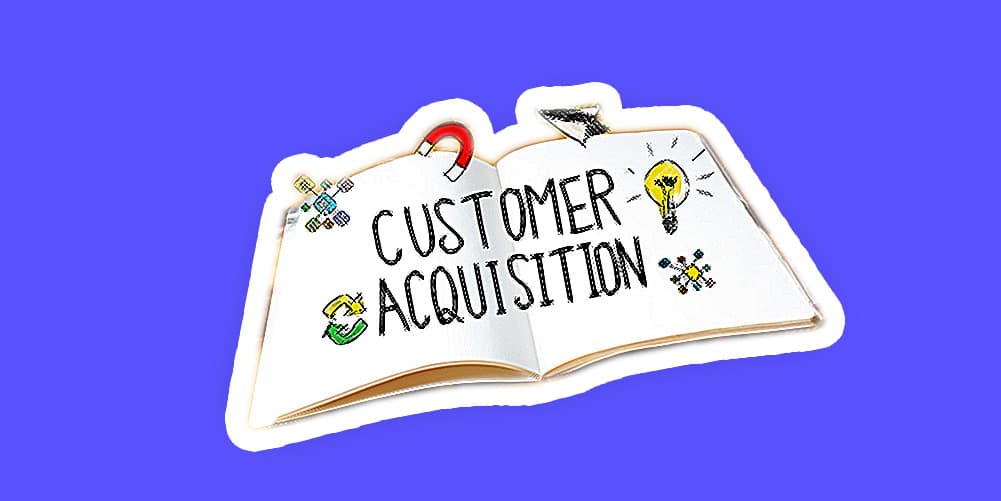
The Complete Guide to Client Acquisition for Agencies [2021 edition]
I am pretty sure that if you run an agency, one of the things that's on top of your mind is:
How
can I get more clients for my agency?
To answer this, here's a visual representation of your agency marketing strategy:
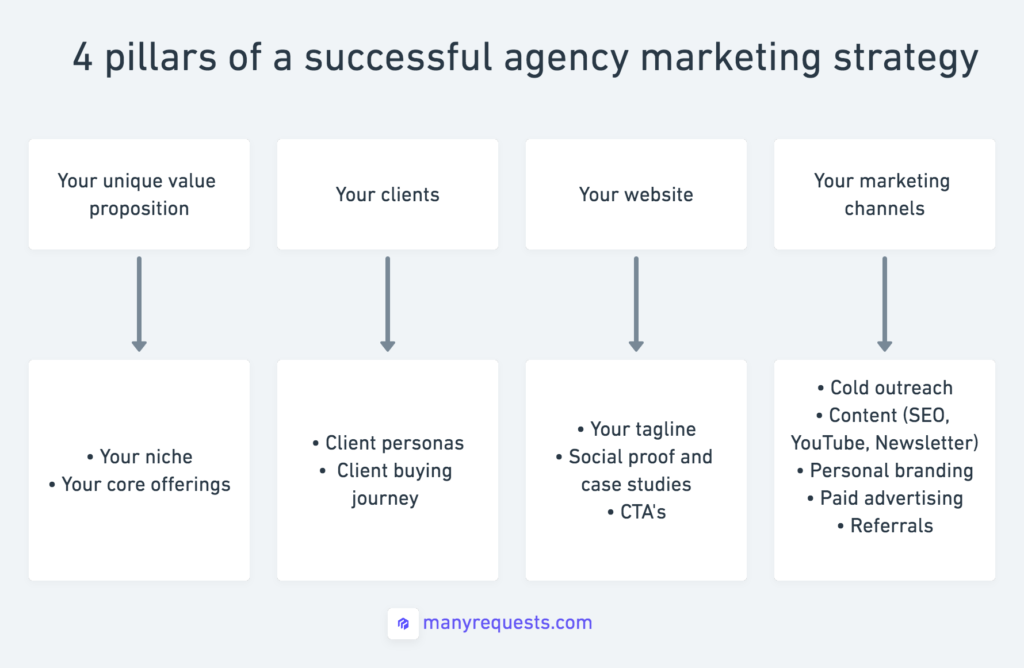
In other words, your marketing strategy = Your unique value proposition + Your ideal clients + Your website + Your
marketing.
Let's dive in!
Chapter 1: Your unique value proposition
Let's start with some basics.
There are too many agencies doing too much of the same.
You don't need
to create something entirely new but you need to find ways differentiate yourself so you can stand
out from the competition and come up with a unique value proposition for your agency.
There
are two ways to do that:
1. Niche down
2. Creating a core offering for that niche
If you don't have
a solid value proposition and/or are not targeting the right clients, no amount of marketing will help you grow your
business.
So how do you find a unique value proposition?
a) Niche down
As a first step, I always advise the following: Niche down.
Niching down means... You narrow your focus.
Instead of going wide, you focus on being really good at solving 1-2 problems for a select group of
clients.
Let's take the example of Will, from Hatchly, an
on-demand design service in the UK:
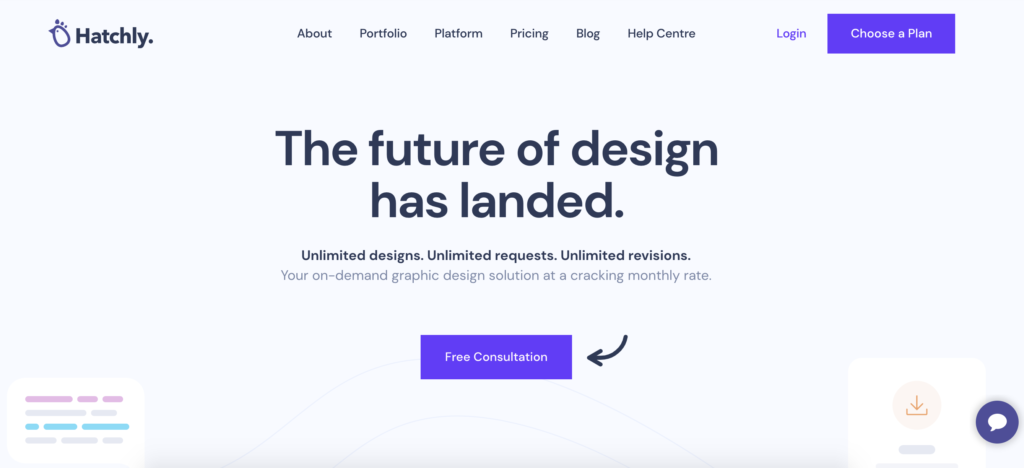
Instead of offering web development, maintenance, advertising (like most agencies that do it all) he only focused
on one service: Design.
He also further niched down on UK small and medium businesses.
And finally,
he focused on one core offering "On-demand design service for a flat monthly fee for small businesses"
This
brings us to our next point...
b) Create a core offering
Your core offering is the main service you offer. What your company will be known for.
In the case of Will,
it's "Graphic design for a flat monthly fee"
What he offers is basically being able to get design done,
on-demand, without having to interview designers, and contracts.
All in all, finding a niche (UK small
businesses that want regular graphic design done) + your core offering (on-demand design at an affordable cost)
gives your business a clear, and unique value proposition.
This makes Will's business stands out from the
competition.
Chapter 2: Your ideal clients
Once you've established your unique value proposition it's time to ask yourself this question:
Who are
my ideal clients?
The truth is, even if you have an awesome service, not everyone will need it.
Your service will be great for a small subset of clients, but not to
everyone.
I usually take two steps to answer this questions:
1. Create client personas
2.
Understand my client buying journey
a) How to create client personas for your agency
Let's take again the example of Will, here's an example of what his ideal client persona could be:
- Based in the United Kingdom
- 5-10 employees
- between $250k to $5m in annual revenue
- Has a social media
page and needs to create marketing assets on a month-to-month basis
- Willing to spend at least $5-15k a year on
graphic design services
- Mostly spends time on Facebook and some of them are part of some UK entrepreneurs
groups.
Think of client personas as the "profile" of your ideal clients:
- How many employees they
have
- Their industry
- Their geography
- The keywords and phrases they use to describe their business
-
Their goals
- Where they hang out online, what they read, which podcasts they listen to, etc.
There are
two ways to build client personas:
1. Interview your prospective clients
Ask a
potential client if they'd be willing to get on a 15-min call with you.
You could reach out to them and say
"Hey, I launched this new service. I am looking for feedback. In exchange, I'll do one free design for
you."
Here are some questions you can ask your clients during the interview:
- How are you
currently doing X or Y?
- What solutions have you tried in the past? What worked with them and what didn't
work?
- What's your biggest goal with your business this year?
- What's your biggest obstacle you anticipate
in achieving that goal?
Pay attention to the words they use in describing their problems you can use them in
your marketing copy as well (on your website and in your emails)
2. Communities
Another great way of building client personas is to research communities such
as Quora, Reddit, or Facebook groups.
Say you're targeting again UK small business owners.
I would
focus on looking at communities. Here's an example from Facebook.
You can also check on Reddit or
Quora.
Once you've got a clear idea of who your ideal clients are, this brings us to step number 2: Your
client buying journey.
b) Your client buying journey
Once you've defined your client persona, it's important to understand how they will find out about your service.
In other words, understanding which steps they take from understanding which problem they have, to evaluating
solutions, and finally purchasing.
Each step will require different marketing tactics to solve the problems
your prospective clients have along their journey.
A good way to visualise your client journey is to see it
as a funnel, with the following stages: Awareness, consideration, decision.
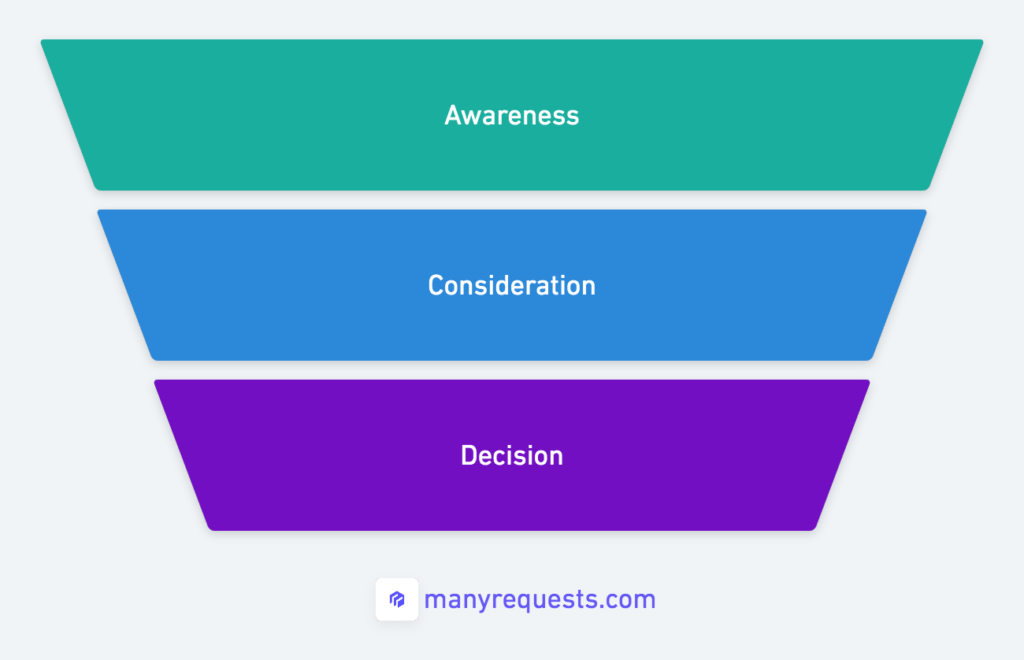
At each stage of the funnel, your clients will have different goals (or problems they want to solve):
The
first stage (awareness), is when they'll start looking for solutions to their problems.
Again taking the
example of Will it could be the client searching on Google : "How to delegate design work?" or joining a Facebook
group and asking "Where do you find designers for your business?"
The second stage (consideration) is when they evaluate different solutions. For example by googling "Upwork
alternative" or getting on a demo call.
Finally, the decision stage is when they finally opt to purchase your
service. This could be starting a trial.
You can also add an extra step which is loyalty, where clients refer
your service to others.
Each step of the funnel will demand different marketing tactics, here's an example:
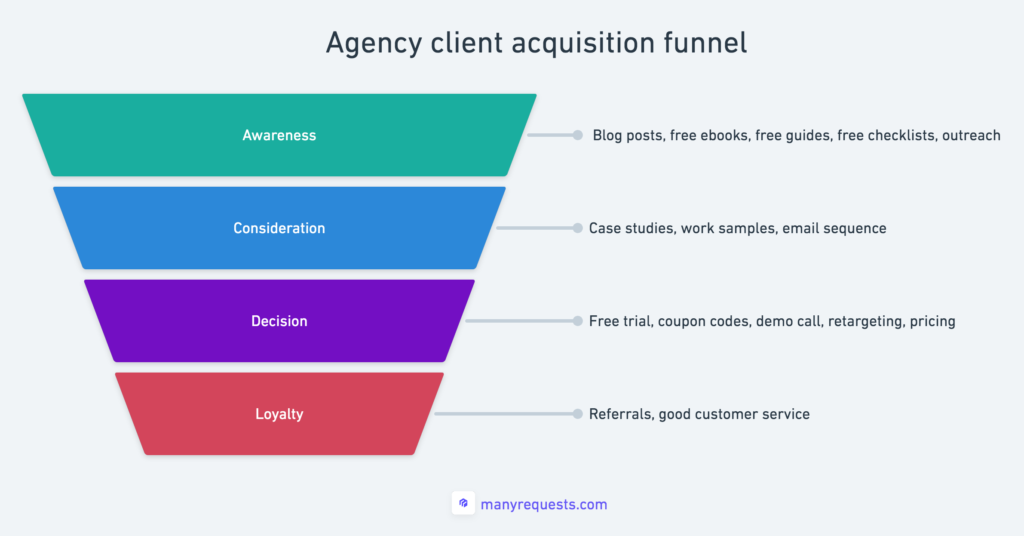
Chapter 3: Your marketing website
Next step: You need to have a website that communicates clearly your value proposition, conveys trust, and converts
leads.
Let's dive in!
a) Communicate your value proposition
The first thing that visitors will ask themselves when landing on your agency website is :
What's in
it for me?
The goal of your website is to answer this. Talk about the following things:
-
Tell visitors about the problem you solve (what you do and why)
- Show how your solution can solve it (how it
works)
- Convince visitors by showing proof and examples of your work (social proof)
Here's a great
example from Video Husky, a video editing service:
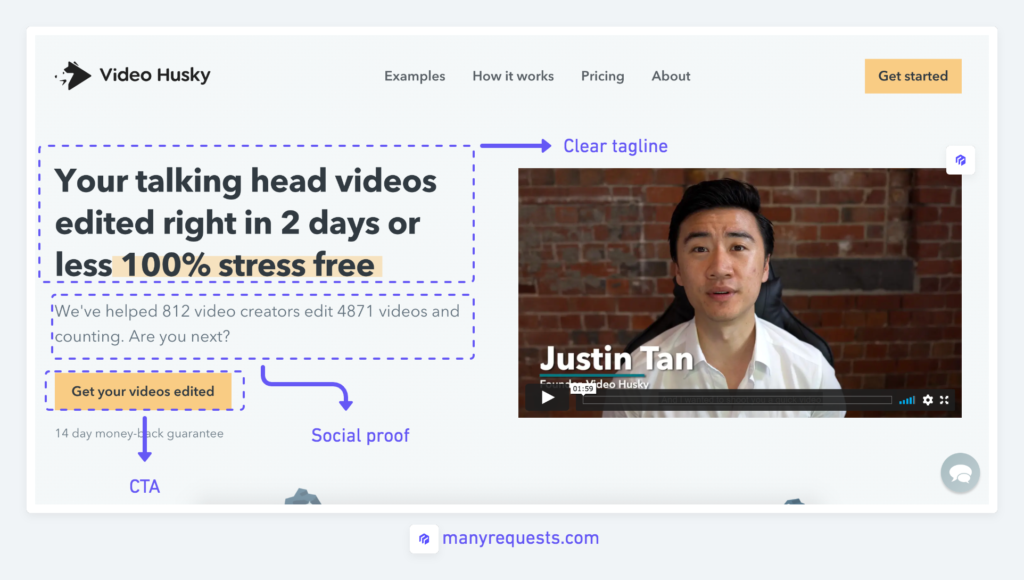
They clearly mention what they do ("Your talking head videos editing right in 2 days'), mention their social proof
("We've helped 812 video creators..."), and have a clear CTA ("Get your videos edited")
In addition, they
also added a video from the founder which further helps convey trust.
b) Create trust with social proof
Social proof and case studies are an amazing way to convince clients: Use it!
Here are some ways to add social
proof to your website:
- Create video testimonials
- Create landing pages with case studies
- Show
logos of the clients you've worked with
- Create a portfolio of your work
c) Convert leads
Lastly, I would design your agency website with one goal in mind: Having a micro conversion.
This could
be:
- A new email subscriber
- A new lead asking questions on chat
- A new demo appointments
A
way to get those micro conversion is to create a lead magnet.
For example:
- A free ebook
- A chat
with a 1-2min video demo of your service
- A free 15-min strategy call
- A quizz/questionnaire that your leads
have to fill out
Once you've got those email subscribers or appointments, you can then aim to convert them
into clients for your agency.
Chapter 4: Your marketing
Last step: Your marketing channels.
Depending the type of agency or service you run, your goal will be to find
profitable marketing channels to acquire leads, and ways to scale that channel.
If you're just getting
started with marketing, the best way is to run experiments. Once you've found something that works, double down on
it.
Let's dive in!
1. Cold outreach
Cold outreach is probably of the best ways for agencies to find clients.
Here are some reasons:
You can
get in front of your prospects right away + there is no costs (apart from your time and a LinkedIn Sales Navigator
subscription or email outreach tool).
Here is a key lesson in doing outreach
successfully:
Focus is on building relationships, not selling.
Most companies start by
just mass messaging prospects either on LinkedIn or email.
That's not the right way to do. Companies are
already receiving tons of messages (even personalised ones!) and will likely ignore your
messages.
Instead, ask questions.
For example, say you're running a design service.
Reach out to prospect and say:
"Hey John, awesome guide you wrote on content marketing. I was wondering,
how do you currently do the illustrations? Do you do them in-house or are you working with
freelancers?"
Personalizing your message and understanding the goals of your prospects and helping
them achieving them is key to build relationships and turn those prospects into clients.
Your goal
when doing outreach is thus not selling, but building relationships with your prospective
clients.
Read more:
- Our guide on
LinkedIn Outreach
- Cold email scripts for
agencies
2. Networking
Another effective way of finding clients is for your agency is networking.
There exists plenty of
communities including Slack communities, Indie Hackers, Reddit, Twitter.
The best way to network on
those communities: Create value.
Share learnings, milestones, or ask feedback.
Reply to
other members offering tips. Once they are familiar with you, you can connect with them and ask them the same
qualifying questions you did for your outreach.
Read more:
- How to find B2B clients on Facebook groups
- Slack communities for agencies
3. Referrals
Probably the best way to get clients: Referrals.
Brett grew his design service to $50,000/mo mostly through
word of mouth marketing.
Do great work for your clients, and then ask them to refer you.
You can also incentivises your existing
clients to refer you more clients. For example by offering them a discount on their existing plan.
4. Content and SEO
Another way of generating leads for your agency is to create content.
There are several ways to do that:
Organic search (on Google and YouTube) as well as building your email list.
Here is some example of content
you can create for your agency:
a) SEO
SEO is a great way to generate leads for your
agency. With 3 billion searches daily (provide source), many leads go to Google to find answers to their
problems.
You can create content that answers their questions and introduces your service in the
answer.
You can also guest blog on other agency website to improve your backlink profile as well as drive
leads to your website.
Here's an example from WPBuffs:
They get most of their traffic from search.
b) YouTube
Another way of driving leads to your agency is to create a YouTube
channel.
A lot of people look at YouTube first (the second biggest search engine) to solve their problem.
Let's say you run a Wordpress maintenance business. Creating a video such as "How to speed up Wordpress
website" could drive a lot of leads.
d) Newsletter
Finally, building a newsletter and
sending monthly updates as well as email sequences is another great way to get clients for your agency.
To
grow your newsletter, create free products (for example: An e-book, or a mini course).
5. Personal branding
Another way to generate leads is to build relationships through personal branding.
Here are a few ways to do
it:
a) Twitter
Share interesting tips or insights about your journey. Follow people
that might be in your target market and comment under discussions.
Here's an example from the founder of Lemon.io, a service matching developers to startup companies.
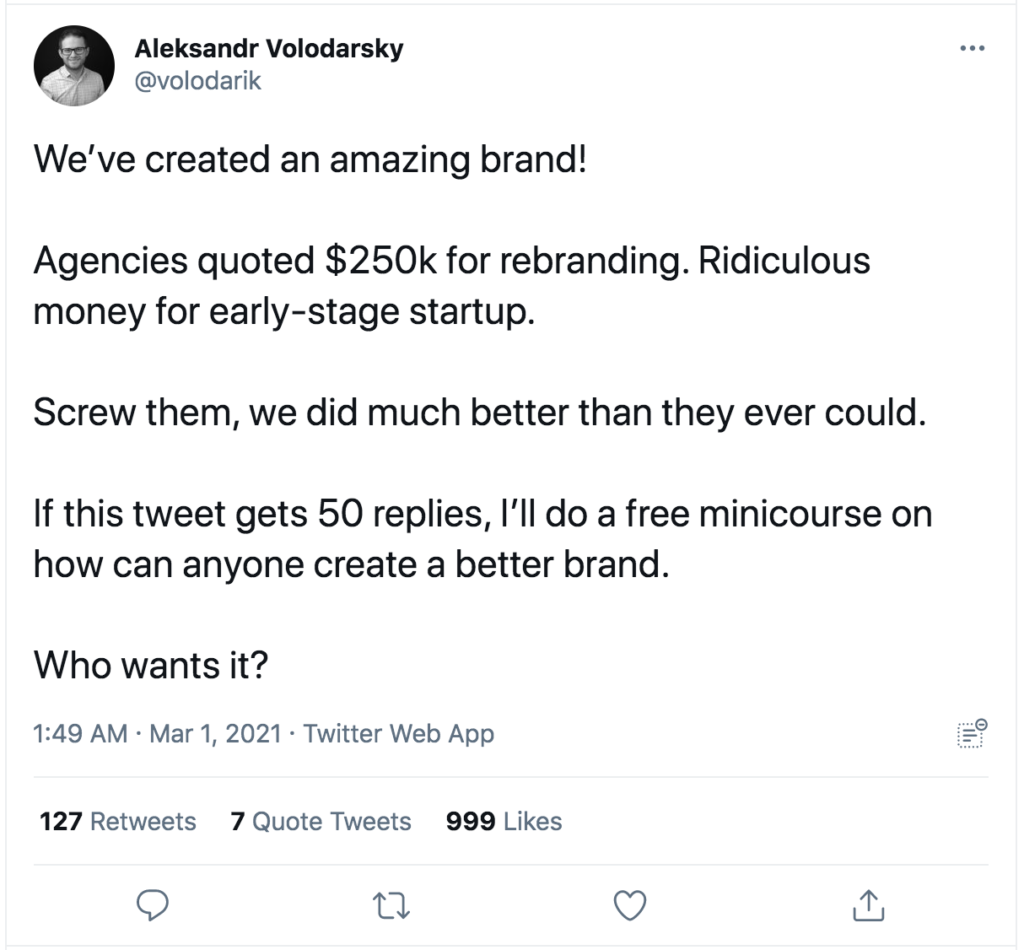
While the founder of Lemon only has about 2500 followers, he got
almost 1000 likes. The engagement on Twitter is huge and he might have landed a few clients just from that single
tweet.
Twitter is especially great if your target clients are tech startups or venture capitalist
funds.
b) Podcasts
Another way of generating brand awareness and leads is to
ppear on podcasts that your target market listens to.
You could identify a list of podcasts from Spotify that
could interest your target market and reach out to the podcast host to be featured.
Have a compelling story to tell and make sure to personalise your email when reaching out.
c)
Create your own community
Another way is to create your own community (for example by creating a
Facebook group) and sharing helpful tips and advice to your audience.
Here's an example from Dofollow, a link building service:
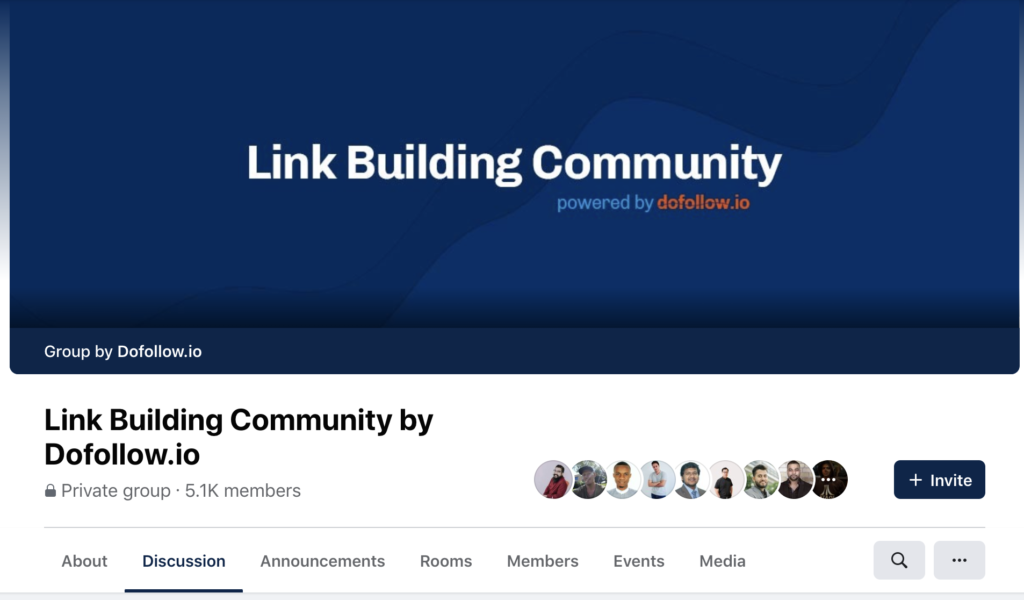
They created a 5000+ members Facebook group where they share best practices about SEO (and especially link building). The majority might not convert to clients but it is still a great way to build up brand awareness.
6. Industry directories
Another way of getting leads is to feature yourself on directories such as Product Hunt, TrustPilot, Angel List,
Clutch, Sortlist, G2, and other directories.
Once you've completed work for one of your clients, ask them to
leave a review and start trying to rank on those directories (you can also advertise on some of them to appear
higher in the search results)
7. Marketing engineering
Marketing engineering is a lesser known way of getting clients, yet one that can be very
profitable.
Marketing engineering is basically creating a side project (usually free) that has the goal of
generating leads for your main agency services.
Take the example of Pixel True which created free templates which in turns grows awareness for
his newsletter and service:
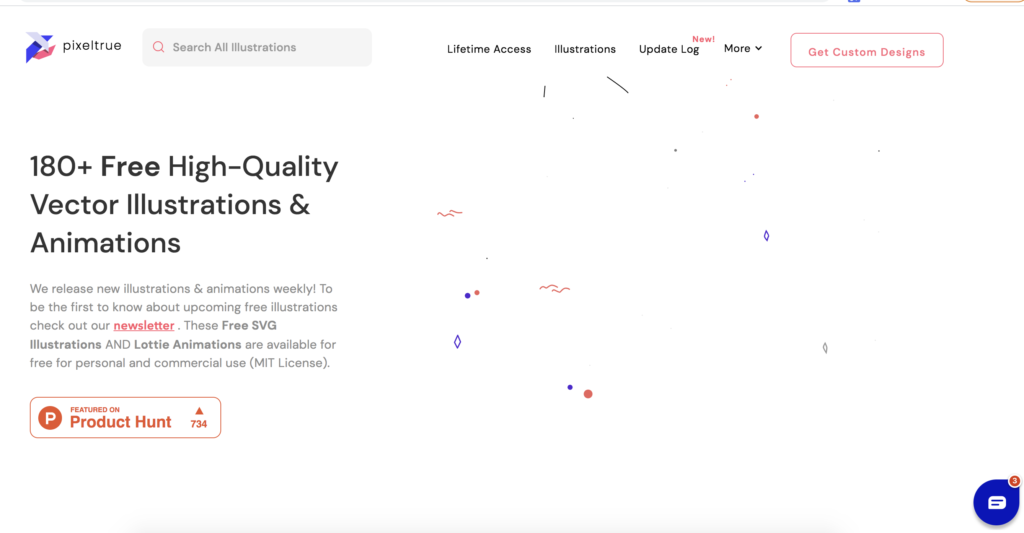
They created various free templates as well as a free illustration gallery.
Marketing engineering helps
Pixel True hit two birds with one stone:
1. They get leads that are interested in their free templates (and
who eventually learn about Pixel True services)
2. They get free PR from other websites (and backlinks) who link to their illustration gallery and
templates.
Here are some other examples of marketing engineering you can do for your agency:
- A free
course
- A free email newsletter series
- Templates and checklists
- Calculators, cost estimates, etc.
8. Paid advertising
Finally, paid advertising can be a great way to drive leads or grow your email list.
Here's an example again
from Video Husky:
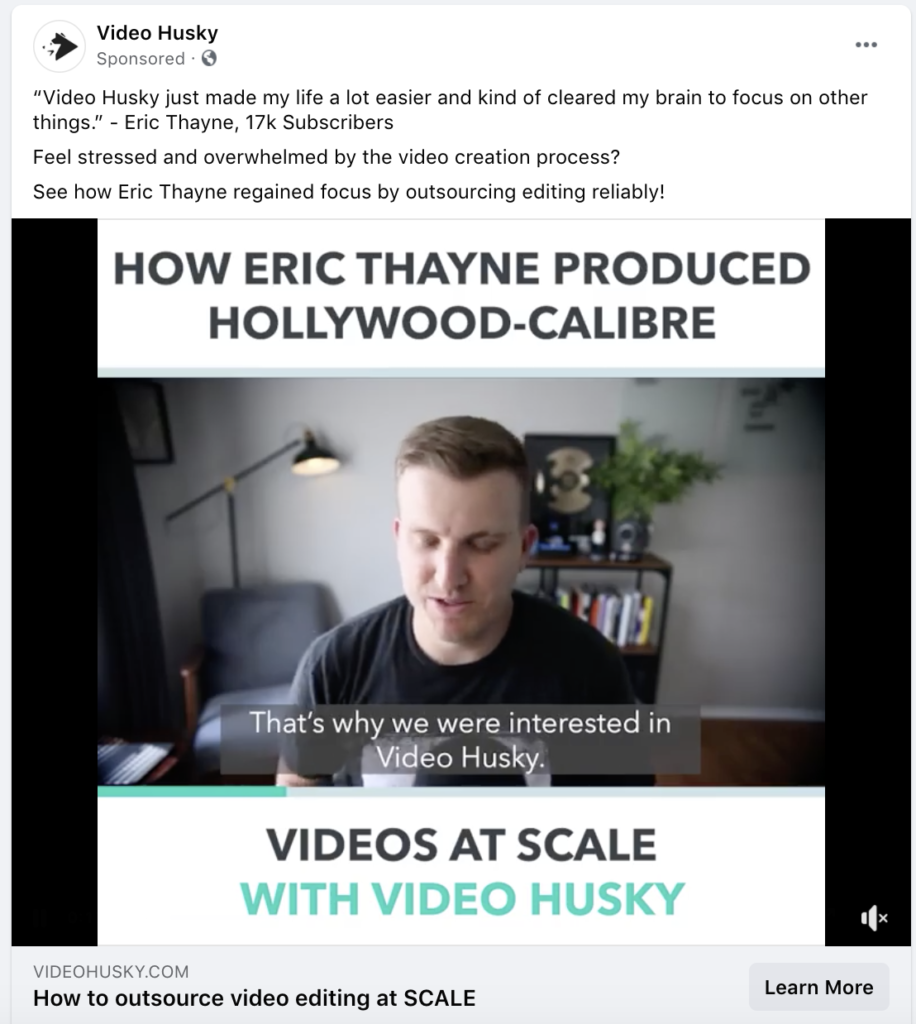
You could run ads to retarget your visitors or simply to drive awareness.
Here are some examples of ads you
can create to generate leads for your agency:
- Testimonials / reviews
- Founder introducing service
-
Examples of past work
Wrapping up
Marketing is mostly about solving problems.
Having a strong value proposition and knowing who your ideal agency clients are is the most important step to start
the marketing journey of your agency.
If at heart, your agency doesn't solve problems for your clients, it
will be difficult to generate leads.
Next to this, having a website that communicates well your value
proposition, conveys trust (with case studies) and is optimised for conversions is key to ensure your marketing
efforts converts visitors into sales opportunities.
Once you've got those basics in place, there are multiple
ways to generate leads (and demo appointments) or traffic to your agency website: From cold outreach, to content
creation, as well as personal branding and other tactics.
If you're starting out, make experiments. Once
you've found a profitable channel, double down on it and create processes to scale.
If you'd like to discuss
how you grew your agency, consider joining our Facebook community!
Running an agency?
ManyRequests is an all-in-one client portal and client requests management software.
Learn more